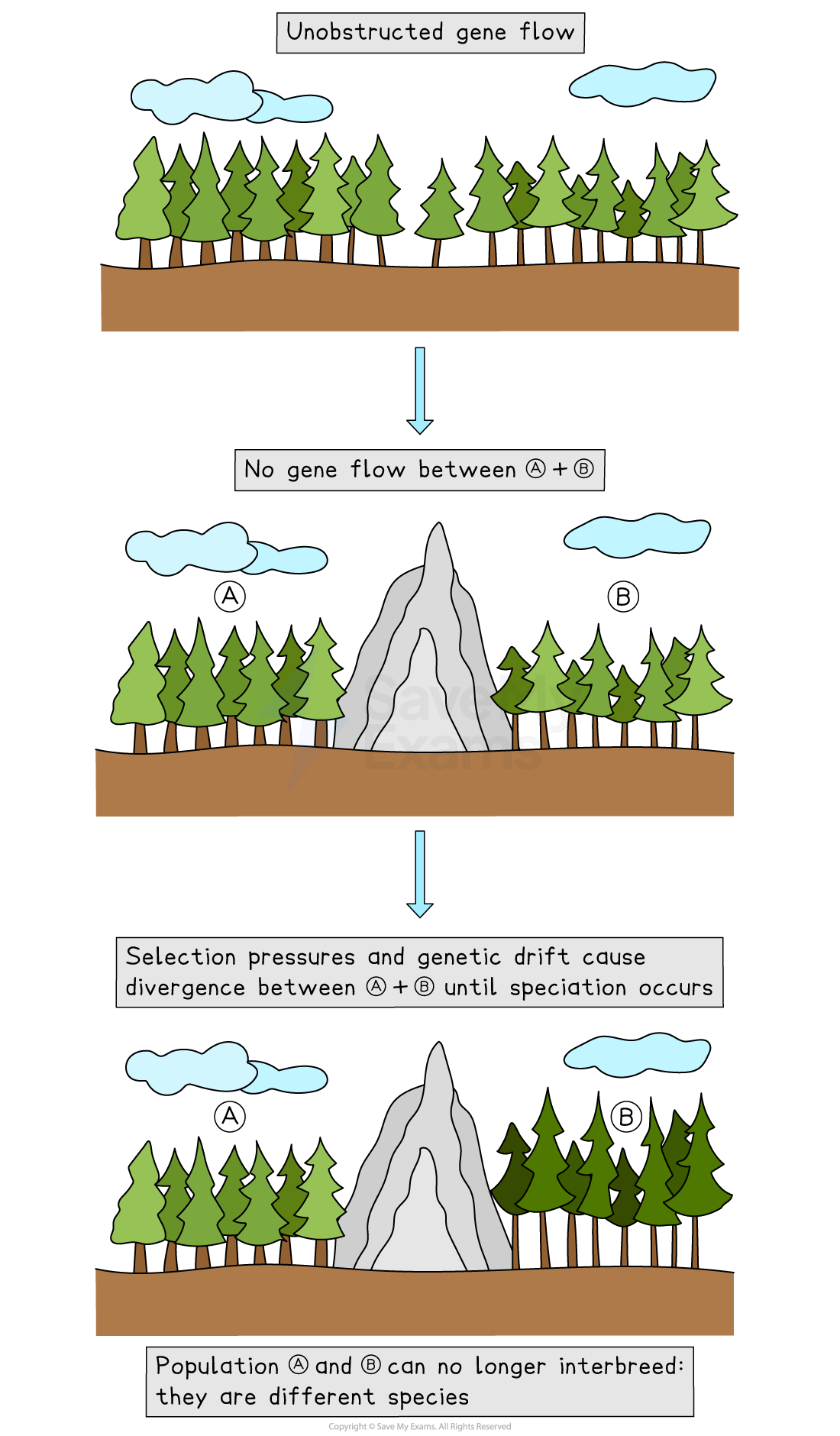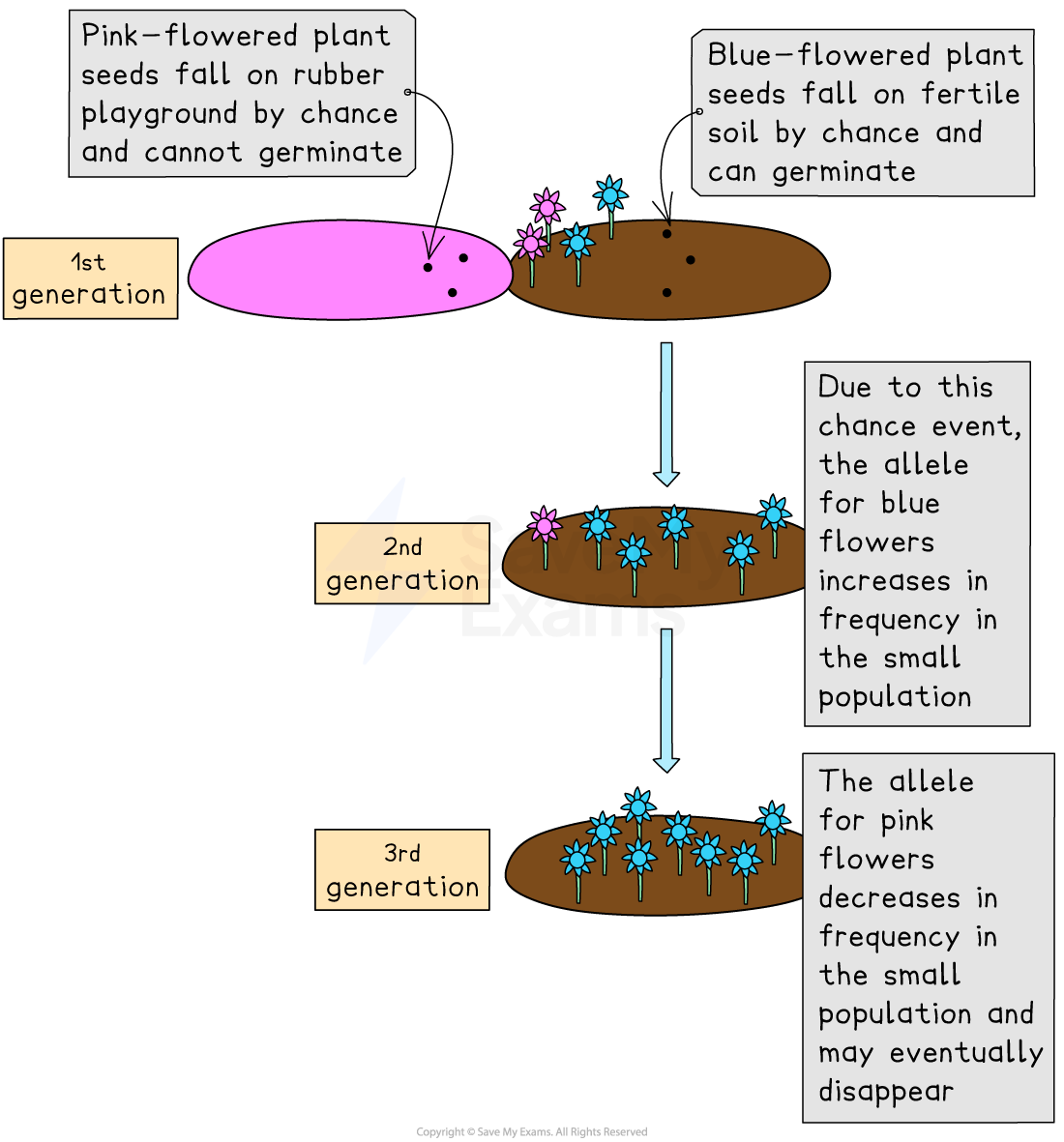Types of Speciation (AQA A Level Biology): Revision Note
Exam code: 7402
Reproductive separation
For evolution to occur, the new species population must be genetically and reproductively separated from the pre-existing species population
When this happens, there can no longer be an exchange of genes between the two populations
Reproductive isolation occurs when changes in alleles or phenotypes prevent certain individuals from breeding successfully with others in the same population
These changes reduce gene flow and can lead to speciation
Examples include:
seasonal isolation: individuals reproduce at different times of year
mechanical isolation: changes in genitalia prevent successful mating
behavioural isolation: changes in courtship behaviour prevent the attraction of mates
Genetic isolation
When two populations become reproductively isolated, they stop exchanging genes
As a result, allele frequencies change independently in each group over time
If these genetic differences accumulate to the point where individuals can no longer interbreed and produce fertile offspring
This means that speciation has occurred

Allopatric & sympatric speciation
Allopatric speciation
Allopatric speciation happens when a population is split by a geographical barrier
Barriers can be natural (e.g. mountains, rivers) or man-made (e.g. roads)
The separated groups are reproductively isolated, so no gene flow occurs
Different selection pressures act on each group, changing allele frequencies through natural selection
Over time, these changes lead to differences in phenotypes, including physical, behavioural and physiological traits
Eventually, the two populations become genetically distinct and can no longer interbreed – they are now separate species
Example: allopatric speciation in trees
A population of trees is split by the formation of a new mountain range
The two groups can no longer interbreed
Each group faces different environmental conditions
Over many generations, they evolve into two separate species

Sympatric speciation
Sympatric speciation happens without a geographical barrier
The population lives in the same area, but splits into two groups with no gene flow between them
This separation is caused by:
ecological separation – groups live in different environments within the same area (e.g. soil pH affects flowering time in plants)
behavioural separation – groups develop different behaviours (e.g. courtship, feeding, or communication), preventing mating
Example: sympatric speciation in fish
A single fish species lives in a lake
Some fish feed at the bottom, others stay in the open water
These groups live in different environments and show different feeding behaviours
Over time, selection pressures favour different traits:
Long jaws for bottom-feeders
Short jaws for mid-water feeders
The groups also evolve different courtship behaviours
Eventually, they can no longer interbreed – they are now separate species
Examiner Tips and Tricks
When explaining sympatric speciation, clearly separate the factor that causes the initial separation (e.g. feeding behaviour) from the factor that prevents breeding after genetic changes (e.g. courtship behaviour). Don’t confuse the two — they occur at different stages in the speciation process.
Genetic drift
Genetic drift is when chance (instead of environmental selection pressures) affects which individuals in a population survive, breed and pass on their alleles
For example, when a population is significantly small, chance can affect which alleles get passed onto the next generation
Over time, some alleles can be lost or favoured purely by chance
When there is a gradual change in allele frequencies in a small population due to chance and not natural selection, genetic drift is occurring
In large populations, genetic drift is less likely to have an effect because any chance variations in allele frequencies usually even out across the whole population
Natural selection has a much more influential role in the evolution of large populations
Example: genetic drift in plants
In a small population of plants growing near a playground with a rubber floor:
Half of the plants have alleles for blue flowers
Half of the plants have alleles for pink flowers
By chance, most pink-flowered seeds land on rubber and fail to germinate
Blue-flowered seeds land on fertile soil and grow
Over generations, pink alleles may disappear due to this random event, not selection

Examiner Tips and Tricks
Make sure you can explain that genetic drift has a greater impact in small populations because chance events can significantly alter allele frequencies — there's less genetic diversity to buffer against random loss of alleles, so evolutionary change happens more quickly and unpredictably

Unlock more, it's free!
Did this page help you?